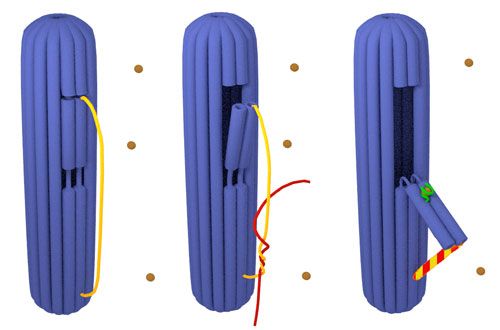Nanoactuators: Tiny Machines Driving Big Advancements
What are Nanoactuators?
Nanoactuators are nanoscale devices that convert energy into motion or mechanical work. They are the tiny machines that drive movement and actuation at the nanoscale, enabling precise control and manipulation of matter on an incredibly small scale. Nanoactuators come in various forms, such as electrostatic, piezoelectric, thermal, or magnetic, each utilizing different principles to generate motion.

Key Characteristics of Nanoactuators
Nanoactuators possess unique characteristics that distinguish them from their macroscale counterparts:
- Nanoscale Dimensions: Nanoactuators have dimensions in the nanometer range, typically below 100 nm. This small size allows for the fabrication of highly compact and integrated systems.
- High Precision and Resolution: Due to their nanoscale size, nanoactuators can achieve extremely high precision and resolution in their motion and positioning. They can generate displacements and forces with nanometer accuracy.
- Fast Response Times: Nanoactuators often have fast response times, enabling rapid actuation and movement. This is due to their small size and the short distances over which they operate.
- Low Power Consumption: Many nanoactuators require low power consumption to operate, making them energy-efficient and suitable for portable or autonomous devices.
Types of Nanoactuators
There are several types of nanoactuators based on their actuation mechanism:
Electrostatic Nanoactuators
Electrostatic nanoactuators utilize electric fields to generate motion. They typically consist of two electrodes separated by a small gap. When a voltage is applied, the electrostatic force between the electrodes causes them to move relative to each other. Electrostatic nanoactuators are known for their fast response times and low power consumption.
Piezoelectric Nanoactuators
Piezoelectric nanoactuators are based on materials that exhibit the piezoelectric effect, which is the ability to generate an electric charge in response to mechanical stress. When an electric field is applied to a piezoelectric material, it deforms, resulting in mechanical motion. Piezoelectric nanoactuators offer high precision and fast response times.
Thermal Nanoactuators
Thermal nanoactuators rely on the expansion or contraction of materials in response to temperature changes. They often utilize bimorph structures, where two materials with different thermal expansion coefficients are bonded together. When heated, the difference in expansion causes the structure to bend or deform, generating motion.
Magnetic Nanoactuators
Magnetic nanoactuators exploit magnetic fields to induce motion. They typically consist of magnetic materials or structures that respond to external magnetic fields. By controlling the magnetic field, precise actuation and positioning can be achieved. Magnetic nanoactuators offer the advantage of remote actuation without the need for direct physical contact.
Applications of Nanoactuators
Nanoactuators find applications in a wide range of fields, including:
Nanorobotics
Nanoactuators are essential components in the development of nanorobots, which are tiny machines designed to perform specific tasks at the nanoscale. They enable the movement and manipulation of nanorobots, allowing them to navigate through complex environments and interact with their surroundings.
Microelectromechanical Systems (MEMS)
Nanoactuators are used in MEMS devices to generate motion and actuation. They are integrated into microsensors, microvalves, micropumps, and other MEMS components to enable precise control and movement at the microscale.
Drug Delivery
Nanoactuators can be employed in targeted drug delivery systems. They can be designed to respond to specific stimuli, such as pH, temperature, or magnetic fields, to trigger the release of drugs at desired locations within the body. This targeted delivery approach enhances the effectiveness of treatments while minimizing side effects.
Nanomanipulation
Nanoactuators are used in nanomanipulation systems to precisely position and manipulate individual atoms, molecules, or nanoparticles. They enable the assembly and characterization of nanostructures, contributing to advancements in nanoscience and nanotechnology.
Challenges and Future Perspectives
While nanoactuators have demonstrated remarkable capabilities, several challenges need to be addressed for their widespread implementation. One major challenge is the scalability and manufacturability of nanoactuators. Developing reliable and cost-effective fabrication processes is crucial for their mass production and commercialization.
Future research in nanoactuators will focus on improving their performance, reliability, and integration with other nanoscale components. The development of novel materials and actuation mechanisms will expand the capabilities of nanoactuators. Additionally, the integration of nanoactuators with sensors, controllers, and power sources will enable the creation of autonomous and intelligent nanosystems.
As nanoactuators continue to advance, they are expected to revolutionize various fields, from biomedical engineering and drug delivery to nanorobotics and materials science. Their ability to generate precise motion and perform work at the nanoscale will open up new possibilities for scientific exploration, technological innovation, and real-world applications.
Further Reading
Chemical Science, A highly integrated DNA nanomachine operating in living cells powered by an endogenous stimulus
Cell Reports Physical Science, From fundamentals to future challenges for flexible piezoelectric actuators
